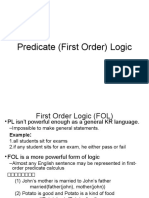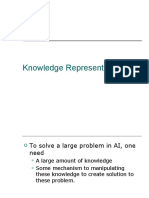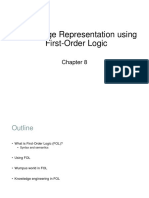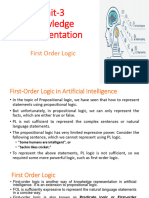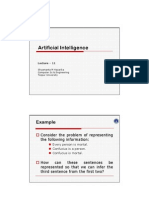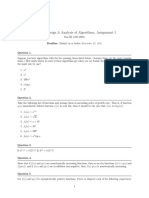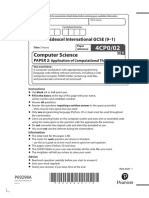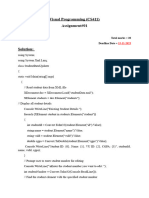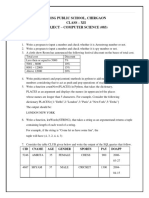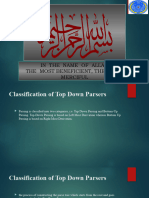0% found this document useful (0 votes)
108 views20 pagesIntro to Predicate Logic
This document provides an introduction to predicate logic and logical agents. It discusses [1] the limitations of propositional logic and how predicate logic addresses these limitations by allowing the representation of objects, properties, and relationships. It then [2] explains the basic syntax of predicate logic, including predicates, terms, quantifiers, and examples of how to represent sentences. Finally, [3] it gives examples of how predicate logic can be used to represent problems and inferences can be drawn from a knowledge base expressed in predicate logic.
Uploaded by
Pratik RajCopyright
© © All Rights Reserved
We take content rights seriously. If you suspect this is your content, claim it here.
Available Formats
Download as PDF, TXT or read online on Scribd
0% found this document useful (0 votes)
108 views20 pagesIntro to Predicate Logic
This document provides an introduction to predicate logic and logical agents. It discusses [1] the limitations of propositional logic and how predicate logic addresses these limitations by allowing the representation of objects, properties, and relationships. It then [2] explains the basic syntax of predicate logic, including predicates, terms, quantifiers, and examples of how to represent sentences. Finally, [3] it gives examples of how predicate logic can be used to represent problems and inferences can be drawn from a knowledge base expressed in predicate logic.
Uploaded by
Pratik RajCopyright
© © All Rights Reserved
We take content rights seriously. If you suspect this is your content, claim it here.
Available Formats
Download as PDF, TXT or read online on Scribd
/ 20




